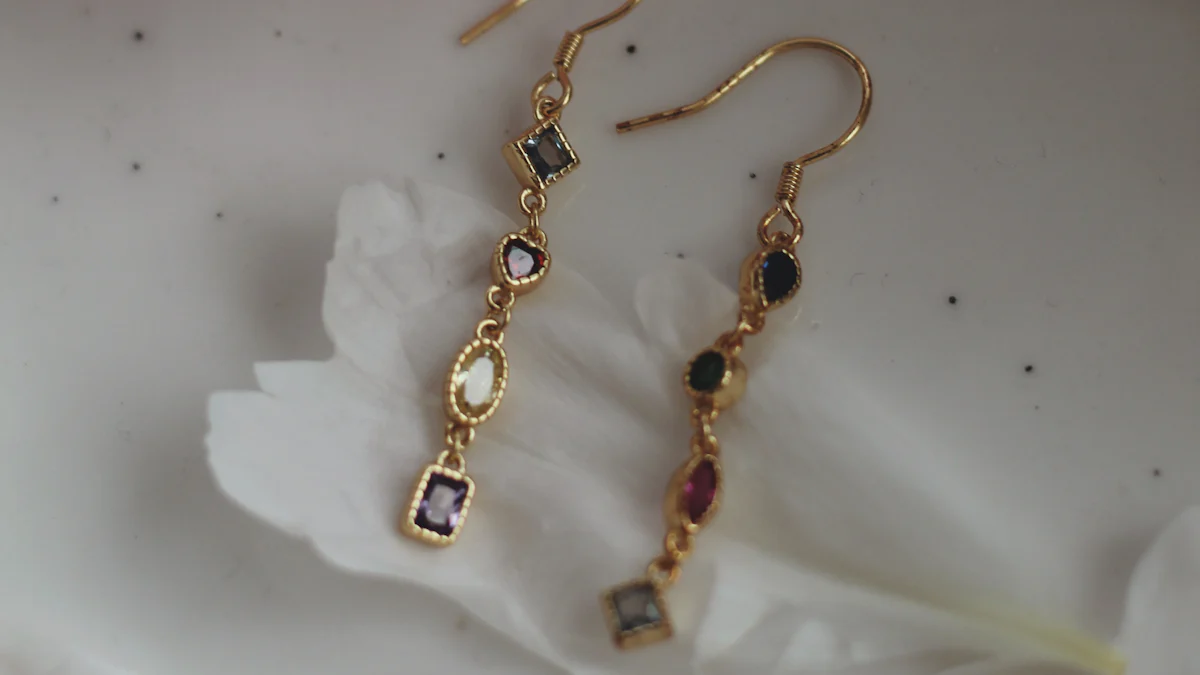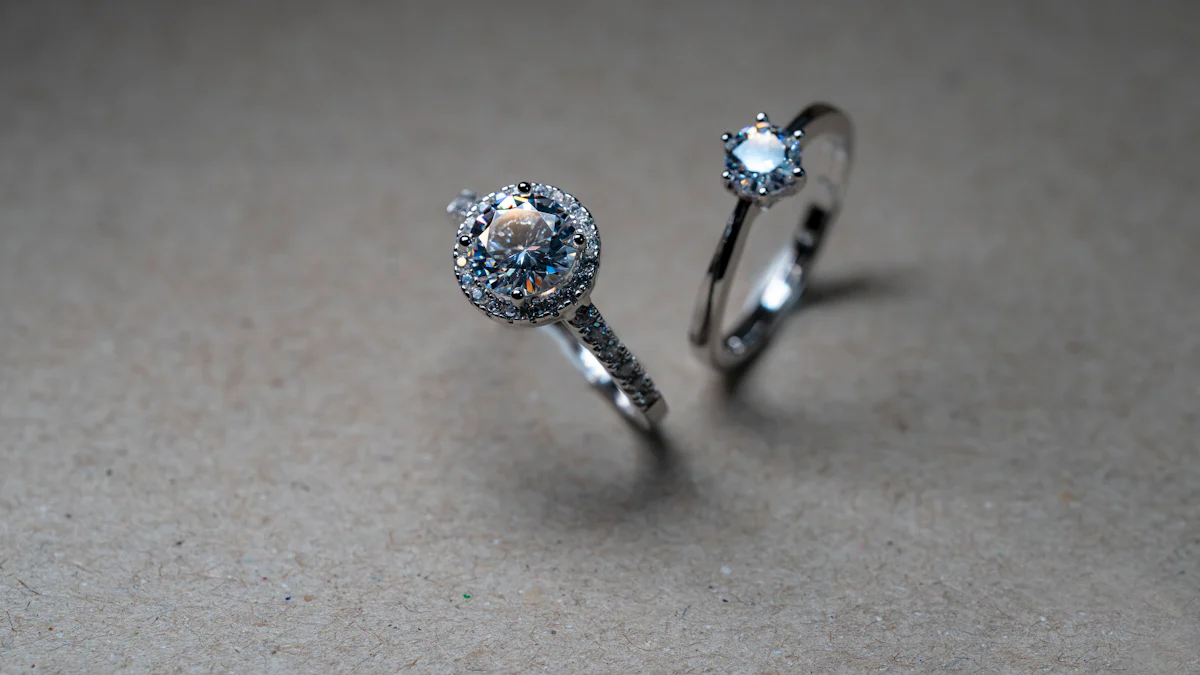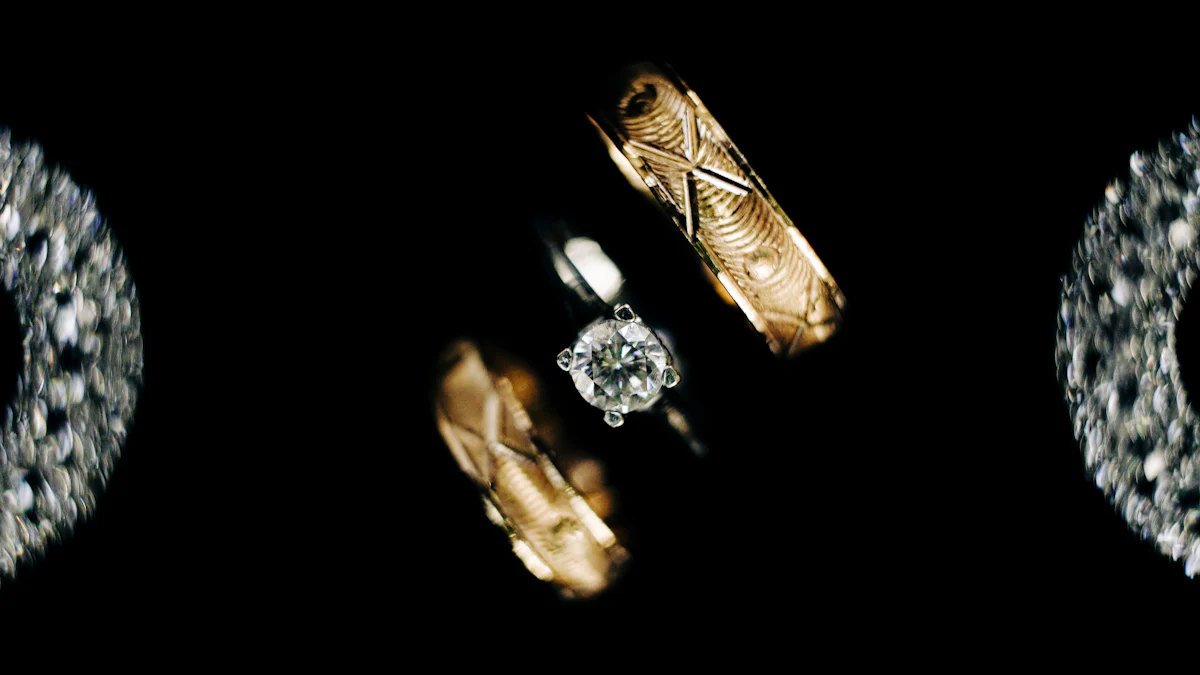How Much is a 1 Carat Diamond Worth: Budget Tips

When you wonder, "how much is a 1 carat diamond worth," you're diving into a world where prices can vary significantly. A 1 carat diamond might cost anywhere from $1,300 to $16,500. This wide range depends on factors like cut quality, clarity, color, and shape. For instance, a well-cut, high-quality diamond could set you back over $16,000, while others might be more budget-friendly. Understanding these elements helps you make informed decisions and find a diamond that fits your budget and preferences.
Key Takeaways
- Understand the Four Cs—Cut, Clarity, Color, and Carat Weight—as they significantly influence a diamond's value and appearance.
- Set a realistic budget by assessing your financial situation and prioritizing the features that matter most to you in a diamond.
- Consider lab-grown diamonds as a cost-effective alternative, often priced up to 30% less than natural diamonds, while still being ethically sourced.
- Explore other gemstone options like sapphires and rubies, which can provide stunning beauty at a lower cost than diamonds.
- Stay informed about market trends, as diamond prices can fluctuate based on demand and supply, helping you make a smart purchase.
- Utilize financing options such as payment plans to manage costs effectively, but be cautious of interest rates and terms.
- Balance quality with cost by focusing on what matters most to you, ensuring your diamond purchase aligns with your budget and personal values.
Understanding the Cost of a 1 Carat Diamond

When you start exploring how much a 1 carat diamond is worth, you'll find that prices can vary widely. Let's break down the factors that influence these costs and help you understand what you're paying for.
Price Range Overview
Factors Influencing Price
Several elements affect the price of a 1 carat diamond. The cut of the diamond plays a crucial role. A well-cut diamond reflects light beautifully, enhancing its sparkle and value. Clarity is another factor. Diamonds with fewer inclusions or blemishes are more valuable. Color also impacts price. Colorless diamonds are rare and thus more expensive. Lastly, the shape of the diamond can influence its cost. Round diamonds often cost more due to their popularity and the amount of rough diamond wasted during cutting.
Market Trends
Market trends can also affect how much a 1 carat diamond is worth. Prices fluctuate based on demand and supply. For instance, a 1 carat round natural diamond might average between $2,800 and $4,000. However, under current market conditions, gem-quality one carat diamonds range from $3,500 to $7,000. Staying informed about these trends helps you make a smart purchase.
The Four Cs of Diamonds
Understanding the Four Cs—Cut, Clarity, Color, and Carat Weight—will guide you in evaluating a diamond's worth.
Cut
The cut of a diamond determines its brilliance. A well-cut diamond reflects light internally and externally, creating a dazzling effect. Poorly cut diamonds appear dull, even if they have perfect clarity and color.
Clarity
Clarity refers to the presence of imperfections in a diamond. Fewer inclusions mean higher clarity and value. For example, a flawless diamond will cost significantly more than one with visible inclusions.
Color
Diamonds come in various colors, but the most valuable ones are colorless. The less color a diamond has, the higher its price. A D color diamond, which is completely colorless, will be more expensive than a J color diamond, which has a slight yellow tint.
Carat Weight
Carat weight measures a diamond's size. Larger diamonds are rarer and thus more expensive. However, two diamonds of the same carat weight can have different prices based on their cut, clarity, and color.
By understanding these factors, you can better assess how much a 1 carat diamond is worth and make an informed decision that aligns with your budget and preferences.
Budgeting Tips for Buying a 1 Carat Diamond

Buying a 1 carat diamond can be a significant investment. To make sure you get the best value for your money, it's essential to budget wisely. Here are some tips to help you navigate this process.
Setting a Realistic Budget
Assessing Financial Situation
First, take a good look at your financial situation. Determine how much you can comfortably spend without straining your finances. Remember, the price of a 1 carat diamond can vary widely, so knowing your limits will help you make a smart choice.
Prioritizing Features
Once you know your budget, prioritize the features that matter most to you. Do you value a flawless cut, or is size more important? By deciding what you care about most, you can focus your search and avoid overspending on features that don't matter as much to you.
Considering Alternatives
Lab-Grown Diamonds
Lab-grown diamonds offer a fantastic alternative if you're looking to save money. These diamonds are real, with the same chemical and physical properties as natural ones. The best part? They often cost up to 30% less. Plus, they provide peace of mind for those concerned about ethical and environmental issues related to mining.
Expert Testimony: "Lab-grown diamonds are real diamonds created in a controlled laboratory environment. They possess the same chemical, physical, and optical properties as natural diamonds. The benefit to you is that lab-created diamonds come at a significantly lower cost—sometimes up to 30% less than their mined counterparts."
Other Gemstone Options
If you're open to alternatives, consider other gemstones. Sapphires, rubies, and emeralds can offer stunning beauty at a fraction of the cost of diamonds. These stones can make unique and personal statements, often with vibrant colors that stand out.
Financing Options
Payment Plans
Many jewelers offer payment plans to help you manage the cost of a diamond. These plans allow you to pay over time, making it easier to afford a higher-quality stone. Just be sure to read the terms carefully to avoid any hidden fees or high-interest rates.
Credit Considerations
Using credit can be another way to finance your purchase. However, it's crucial to consider the interest rates and your ability to pay off the balance. High-interest rates can quickly increase the overall cost of your diamond, so weigh this option carefully.
By following these budgeting tips, you can find a 1 carat diamond that fits both your desires and your financial situation. Remember, the key is to balance quality with cost and choose a diamond that aligns with your personal values and budget.
Final Thoughts on Making a Smart Purchase
When you're buying a 1 carat diamond, finding the right balance between quality and cost is crucial. You want a diamond that looks stunning without breaking the bank. So, how do you achieve this balance?
Balancing Quality and Cost
First, focus on what matters most to you. Do you prioritize a flawless cut, or is size more important? By identifying your priorities, you can allocate your budget effectively. For instance, a VS2 clarity diamond might have small inclusions invisible to the naked eye, offering an eye-clean appearance at a lower price than higher clarity grades. This choice can save you money while still providing a beautiful diamond.
Consider the Four Cs—cut, clarity, color, and carat weight. Each factor affects the price, but not all are equally important to everyone. A well-cut diamond can enhance brilliance, even if it has minor inclusions or a slight color tint. Look for a balance between carat weight and quality within your budget. This approach ensures you get the best value for your money.
Importance of Personal Financial Comfort
Your financial comfort should guide your purchase. It's easy to get caught up in the excitement of buying a diamond, but staying within your means is essential. Recognize that the amount you choose to spend should align with your personal financial situation. You don't want to strain your finances for a diamond.
Expert Insight: “We have seen clients who are more budget-conscious in recent years,” says Landau. “While they may not be spending less than they plan, most are pressing for the best overall value for their budget.”
Ultimately, making a smart purchase means understanding your financial limits and sticking to them. By doing so, you ensure that your diamond purchase brings joy without financial stress. Remember, the perfect diamond is one that fits both your aesthetic preferences and your budget.
In your journey to discover the worth of a 1 carat diamond, remember to balance quality with your budget. Understanding the Four Cs—cut, clarity, color, and carat weight—empowers you to make informed choices. Prioritize what matters most to you, whether it's brilliance or size. Always align your spending with your financial comfort and personal preferences. Consider discussing your budget with your partner to ensure mutual satisfaction. By tailoring your approach to fit your lifestyle, you can find a diamond that brings joy without financial strain.
FAQ
What are the basic diamond quality factors and terminology to understand before purchasing?
Understanding diamond quality factors and terminology can make your buying experience smoother. Familiarize yourself with the Four Cs: Cut, Clarity, Color, and Carat Weight. These elements determine a diamond's value and appearance. Knowing these terms helps you communicate effectively with jewelers and make informed decisions.
What does the diamond buying guide from With Clarity recommend before purchasing a diamond?
The With Clarity guide suggests starting with a budget. Research the Four Cs to understand what matters most to you. Choose a reputable jeweler and decide on a diamond shape. Prioritize the Four Cs based on your preferences and budget. Compare options and inspect the diamond's appearance. Ensure you get proper documentation and consider additional services like insurance for peace of mind.
Why is it important to ensure the diamond quality when making a purchase?
Ensuring diamond quality is crucial for both financial and emotional reasons. Diamonds often symbolize milestones, love, and self-worth. You want a diamond that reflects these values. A high-quality diamond not only holds its value but also becomes a cherished keepsake.
How can a professional jeweler help determine the priorities when buying a diamond?
A professional jeweler can guide you in prioritizing your needs. They will ask about your budget and what's important to you—whether it's the stone's quality, size, or overall feel. From there, they can advise you on what to focus on, ensuring you get the best value for your money.
Are lab-grown diamonds a good alternative to natural diamonds?
Lab-grown diamonds offer a great alternative if you're budget-conscious. They have the same chemical and physical properties as natural diamonds but often cost up to 30% less. Plus, they address ethical and environmental concerns related to mining, making them an attractive option for many buyers.
What should you consider when setting a budget for a diamond?
When setting a budget, assess your financial situation. Determine how much you can comfortably spend without straining your finances. Remember, the price of a diamond can vary widely. Knowing your limits helps you make a smart choice and avoid overspending.
How do market trends affect the price of a 1 carat diamond?
Market trends influence diamond prices based on demand and supply. Prices can fluctuate, so staying informed about these trends helps you make a smart purchase. For instance, current market conditions might place gem-quality one carat diamonds between $3,500 and $7,000.
What are some financing options available for buying a diamond?
Many jewelers offer payment plans to help manage the cost of a diamond. These plans allow you to pay over time, making it easier to afford a higher-quality stone. You can also consider using credit, but be mindful of interest rates and your ability to pay off the balance.
Why should you consider other gemstones as alternatives to diamonds?
Other gemstones like sapphires, rubies, and emeralds offer stunning beauty at a fraction of the cost of diamonds. These stones can make unique and personal statements, often with vibrant colors that stand out. If you're open to alternatives, they provide a beautiful and cost-effective option.
See Also
Exploring Essential Elements That Influence Diamond Ring Costs
What’s the Price of a 2 Carat Lab Diamond?
Are 1.6 Carat Diamond Rings Really Worth It?

